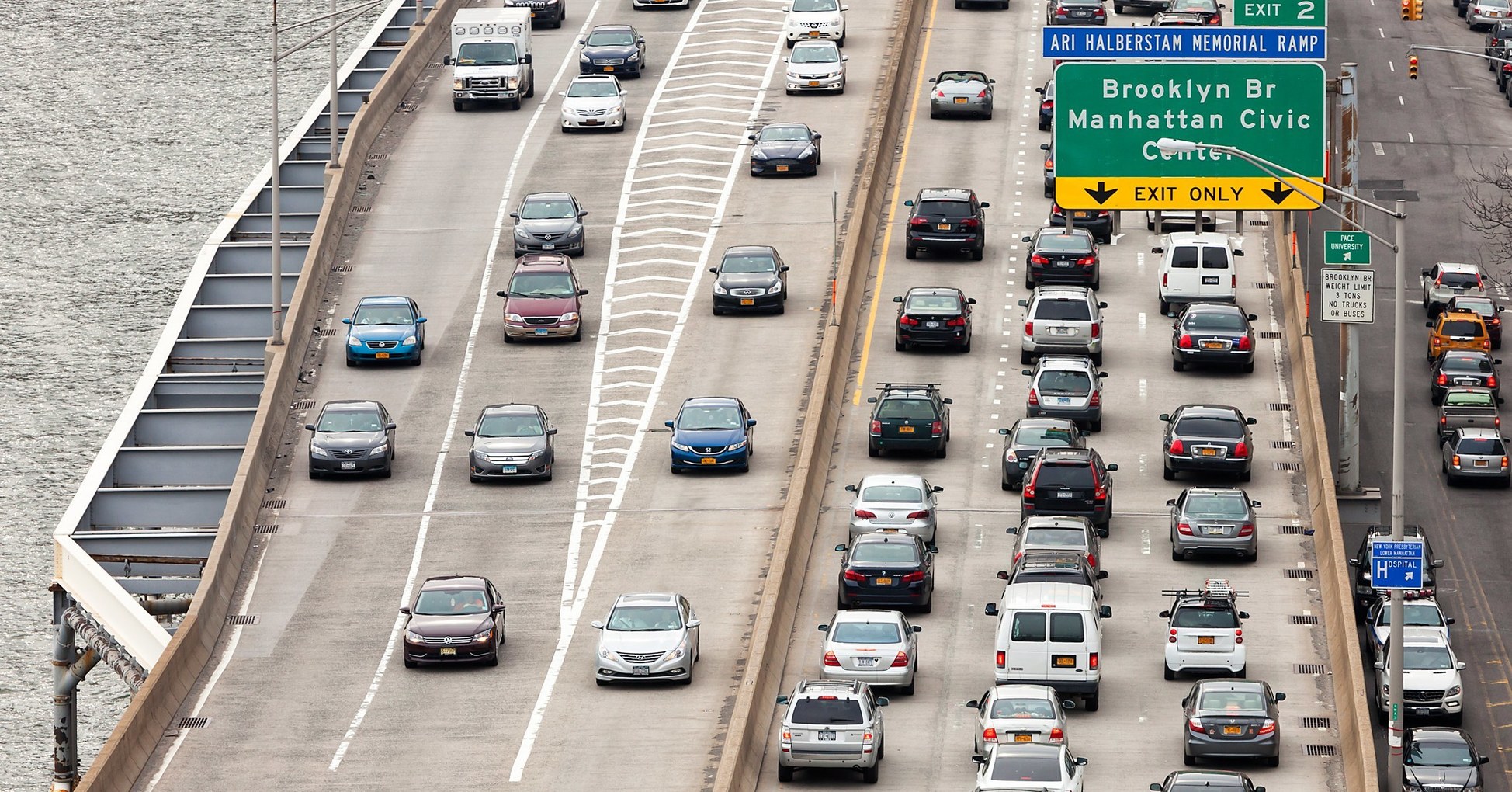The plan would, by 2021, establish a fee for cars or trucks entering the most hectic part of Manhattan, below 60th Street. A few people are expected to get a break on the charge, with planned exemptions or credits for low-income area residents, those with disabilities, and those who need to visit medical services in the area. But for everyone else, it should get a lot more expensive to drive around Manhattan—probably around $11 per car and $25 per truck. (Those numbers come from a state-commissioned task force on congestion pricing, but the Metropolitan Transportation Authority’s Triborough Bridge and Tunnel Authority will set the prices in coming months.) The agency might choose to assess variable fees, making it, for example, more expensive to drive in the congestion zone during rush hour or on weekdays.
The money collected through the plan is slated to go straight to the city’s public transit system. Officials say they expect the plan to raise at least $15 billion in its first five years for capital improvement projects—which just might have pushed the plan over the finish line, politics-wise. “What precipitated this thing getting passed is the subway crisis,” says Bruce Schaller, a former New York City transportation official. “It doesn’t have anything to do with traffic speeds in Manhattan.”
It turns out that those twin goals—fighting traffic and raising lots of money—could be at odds with each other, at least a little bit. “It’s a funny kind of tension,” says Michael Manville, an associate professor of urban planning at UCLA’s Luskin School of Public Affairs. “Policymakers have to balance them.”
The congestion pricing challenge is straight out of the Economics 101 textbook. Make it too expensive and inconvenient to drive in Manhattan, and traffic evaporates—but the city will raise little money to invest in its struggling transit network. Set a lower price, making it still inexpensive and convenient to drive, and the city will raise lots of money for subways—but not relieve much congestion. The result: a bunch of cranky voters who don’t understand why it’s suddenly pricier to drive on still-crowded roads.
Sourced through Scoop.it from: www.wired.com



Leave A Comment